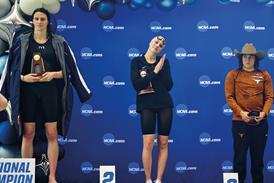How would a UK court respond to a dispute between a photographer and Wikipedia over who owns copyright to an image of a monkey?
We have all heard the phrase ‘speak to the organ grinder, not the monkey’ but never before has the question of ownership of a photograph and whether it is in fact the monkey or the organ grinder who created a photographic work to which copyright may or may not vest been tested in the UK or EU.
A potential dispute has arisen between a wildlife photographer, David Slater, and Wikimedia (the US-based organisation behind Wikipedia) regarding the ownership of a black macaque monkey ‘selfie’, which was taken during a trip Mr Slater made to Indonesia in 2011. Mr Slater was photographing a group of monkeys when his camera was apparently stolen by them, the result of which was that many photos were snapped and, though the majority were blurred and useless, amazingly they included one remarkable picture, showing the monkey’s self-portrait snap clearly.
Wikimedia has placed the picture in its catalogue of free images, claiming that as the picture was taken by a monkey, copyright does not vest in anyone and the image belongs in the public domain. Mr Slater, on the other hand, claims that he owns the copyright in the image and has made formal requests for Wikimedia to remove it from its Wikimedia Commons website, saying he has lost around £10,000 in income since the image was placed in the public domain.
The question is: who would succeed if this case were to reach a UK court? The answer is not quite as straightforward as Mr Slater or Wikimedia might suggest.
In the UK, in accordance with the Copyright Designs and Patents Act 1988, the author of an original work is its creator and, in the case of a photograph, copyright can be claimed if the image is the author’s intellectual creation. In this case, Wikimedia has argued that a human did not go to any effort to actually press the shutter and capture the image and so there is no copyright in the photograph.
In reality, will the UK court agree that Mr Slater has no legal right to the photograph because he did not physically press the camera button to take the picture? If so, as a monkey cannot be classed as the author or legal owner, then Wikimedia will be correct that no one owns the image. But is it more likely to be found that Mr Slater, who went to the effort to travel to Indonesia to take interesting and potentially valuable images, is the creator of the image?
Of course, the picture would never have been taken had Mr Slater not been there at that time. However, in making its decision, any court would need to consider and assess all of the circumstantial evidence surrounding the issue, including whether there is anyone to corroborate Mr Slater’s version of events.
In this regard, Mr Slater has stated that he owned and provided the equipment used to take the photograph, adjusted the camera’s settings and framed the camera to shoot the particular group of monkeys. Moreover, Mr Slater allegedly altered the image after it was taken (perhaps cropping and/or applying a filter) and before its first publication in the Daily Mail.
It is perhaps therefore inevitable that, rather than finding in favour of Wikimedia, the evidence that Mr Slater set up the shot, modified and processed the image prior to publication will persuade the court that the image could legitimately qualify to be the intellectual creation of Mr Slater.
Any such decision (which would give Mr Slater the benefit of the doubt and the benefit of the copyright) will certainly encourage other photographers to continue to distribute the more unusual and unique images they gather, safe in the belief that they are protected by the law – and will also of course keep newspapers’ ‘silly season’ stories safe to run for the future.
Katie Edwards recently joined Hamlins LLP as a solicitor in the media and IP team


















![David Lester (senior partner at Blythe Liggins), Darryl Barnes, Jagdeep Sandher (head of dispute resolution at Blythe Liggins)[4]](https://d1d8vslyhr7rdg.cloudfront.net/Pictures/274x183/4/2/8/116428_davidlesterseniorpartneratblytheligginsdarrylbarnesjagdeepsandherheadofdisputeresolutionatblytheliggins4_981603_crop.jpg)





No comments yet